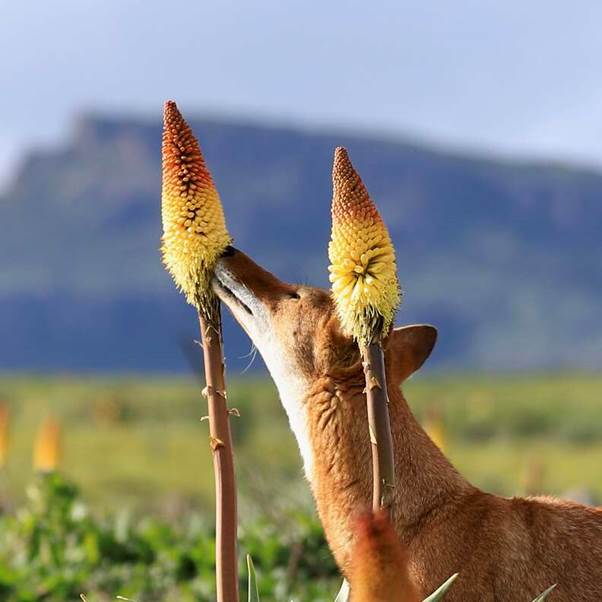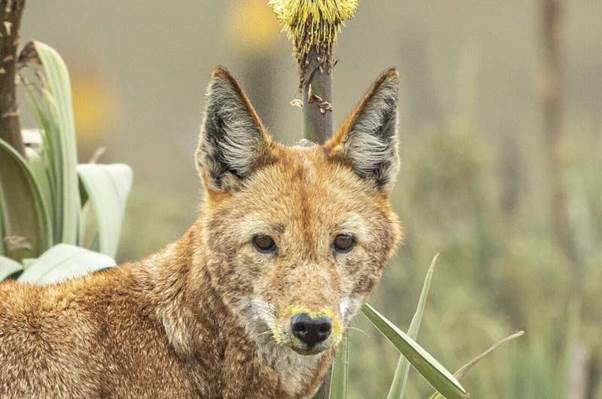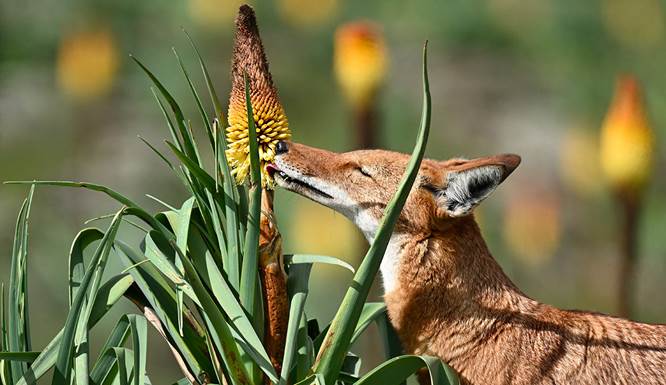In the rugged, sun-bleached landscape of the Sky Islands, where the borders of Arizona, New Mexico, and the northern Mexican states blur into a tapestry of scrub and towering peaks, lives a ghost—the Mexican Gray Wolf, or Canis lupus baileyi, known affectionately as the Lobo. For decades, their existence was a legend, a mournful howl carried on the wind, before conservation efforts painstakingly began their reintroduction.
To the outside world, the Lobo is a symbol of apex predation: teeth, muscle, and relentless focus on the hunt. Their diet is supposed to be dictated by the chase—elk, deer, rabbits. Our research team, led by Dr. Javier Torres, spends thousands of hours monitoring their packs, tracking their movements via radio collar, and analyzing the grim, expected evidence of their kills. We document the natural law of the wild.
Our primary tool for observing the most private moments of the pack, the behaviors unobservable by human presence, is the humble camera trap. These devices are scattered across the vast, arid range, silent witnesses to the daily drama of survival.

It was a typically hot Tuesday in the dusty trailer we used as our field office. We were reviewing footage from Camera Trap Alpha-12, a unit strategically placed near a crucial, but often dry, watering hole in a low-lying valley known for its dense thickets of prickly pear cactus (Opuntia).
We were expecting to see our core subjects: Luna, the pack’s highly intelligent alpha female, and her mate, Sol. We expected to see them drinking, perhaps marking territory, or maybe even dragging the remains of a recent javelina kill.
The first clips were routine. A thirsty coyote, a skittish mule deer doe. Then, Luna appeared.
She was magnificent, as always. Her coat, a mosaic of gray, black, and rust, was perfectly camouflaged against the ochre dust and shadows. She moved with that signature, ground-hugging gait of a top predator—efficient, focused, lethal. But what she was focused on was utterly, delightfully wrong.
She wasn’t looking for prey. She was looking at a patch of the ubiquitous prickly pear, specifically targeting a cluster of the bright, reddish-purple fruit, known locally as tunas.
We watched the footage in stunned silence. A typical wolf might nibble a bit of grass—a digestive aid, a minor purgative. But this was different. This was intentional, focused foraging.
Luna approached the cactus with surprising delicacy. She didn’t tear at the plant. She used her long snout and agile lips to nudge and roll the fallen, ripe tunas that lay on the sandy soil. The challenge was obvious: the spines. Even on the fruit itself, fine, almost invisible, hair-like bristles called glochids are irritating and dangerous.
Luna seemed to understand the hazard. She meticulously scraped the skin of the fruit against the ground or against a smoother piece of rock, essentially peeling it with her teeth and tongue, removing the worst of the defensive armor. It was an astonishing display of learned behavior and fine motor control, something we usually attribute to primates or opportunistic omnivores like bears.
Finally, she secured a piece of the succulent, deep-red pulp.

The moment she consumed it, the most extraordinary thing happened. The fierce, stoic concentration of the wolf melted into an expression of sheer, unadulterated pleasure. Her eyes, usually hard and sharp, softened slightly. She licked her chops, a tiny, satisfied gesture, and immediately sought out the next piece of fruit. She looked less like a fearsome hunter and more like a human child enjoying a sweet treat after a long day.
Over the next week, footage from Alpha-12 revealed that this was not a one-off curiosity. Luna and, later, even Sol and some of the younger members of the pack were returning to the Opuntia patches. They weren’t just eating the fruit; they were gorging on it, spending up to twenty minutes carefully processing and consuming the sweet bounty.
Dr. Torres’s excitement was palpable. “This is huge,” he explained, pointing to the analysis board. “A wolf’s primary diet is 90% meat. When they eat plants, it’s usually incidental. But here, they are purposefully seeking out a significant source of sugar and water in the harshest part of the summer.”
The behavior provided crucial scientific insights:
- Hydration in Drought: Prickly pear fruit is over 80% water. In an environment ravaged by increasing drought and extreme heat, this sugary pulp is a critical, accessible hydration source that prevents the pack from having to risk long, exhausting treks to dwindling water sources, making them more efficient hunters when they do commit to a chase.
- Nutritional Gap: While the wolf palate is built for protein and fat, the tuna offers essential vitamins, minerals, and caloric density that might be missing when prey is scarce or less nutrient-rich. It shows remarkable behavioral plasticity—the ability to adapt their feeding strategy to environmental stress.
- Cultural Transmission: The fact that younger wolves were also observed performing the complex peeling technique suggested the knowledge wasn’t instinctual, but rather learned and passed down through the pack. Luna, the alpha, was teaching a valuable, life-saving skill to the next generation of endangered predators.

The sight of the powerful wolf, normally a creature of teeth and lightning-fast action, delicately handling a spiky fruit was a poignant reminder of the complex reality of wildlife survival. The desert demands flexibility, even from its fiercest inhabitants.
The image of Luna, momentarily transformed from an efficient killer into a thoughtful forager, has changed the way our team views the Lobo. They are not just hunters; they are resourceful survivors, calculating risk versus reward (spines versus sugar) and adapting their ancient instincts to a rapidly changing world.
Our research now includes analyzing the long-term impact of this dietary shift—monitoring the Lobo’s scat near these fruit patches to better understand the frequency and quantity of plant material consumed. This small, sweet deviation from the expected diet provides hope, showing that these rare wolves possess the versatility needed to thrive, not just survive, in their challenging habitat. They are the same magnificent predators, but with a surprising, secret sweet tooth that might just be the key to their future.



